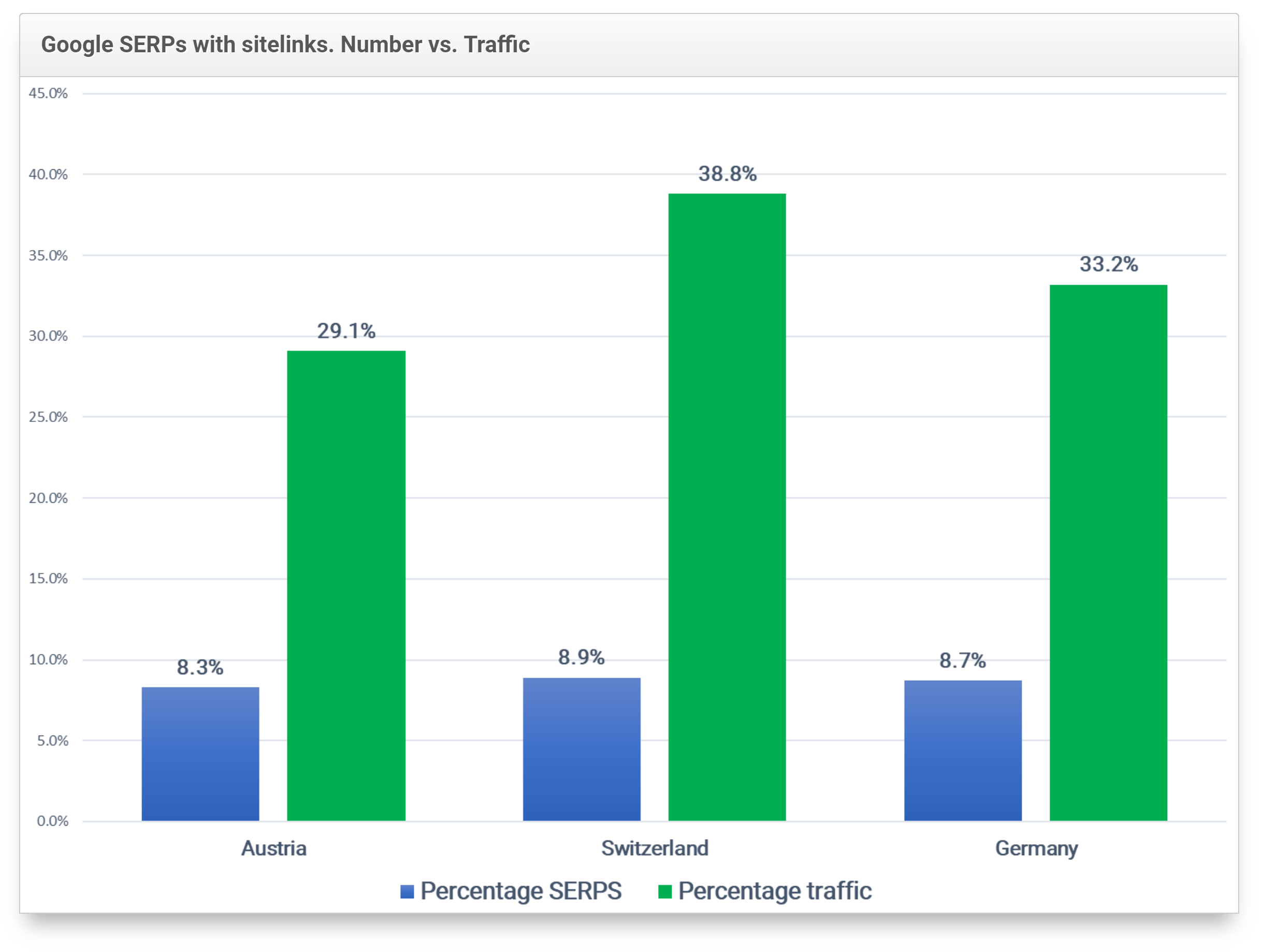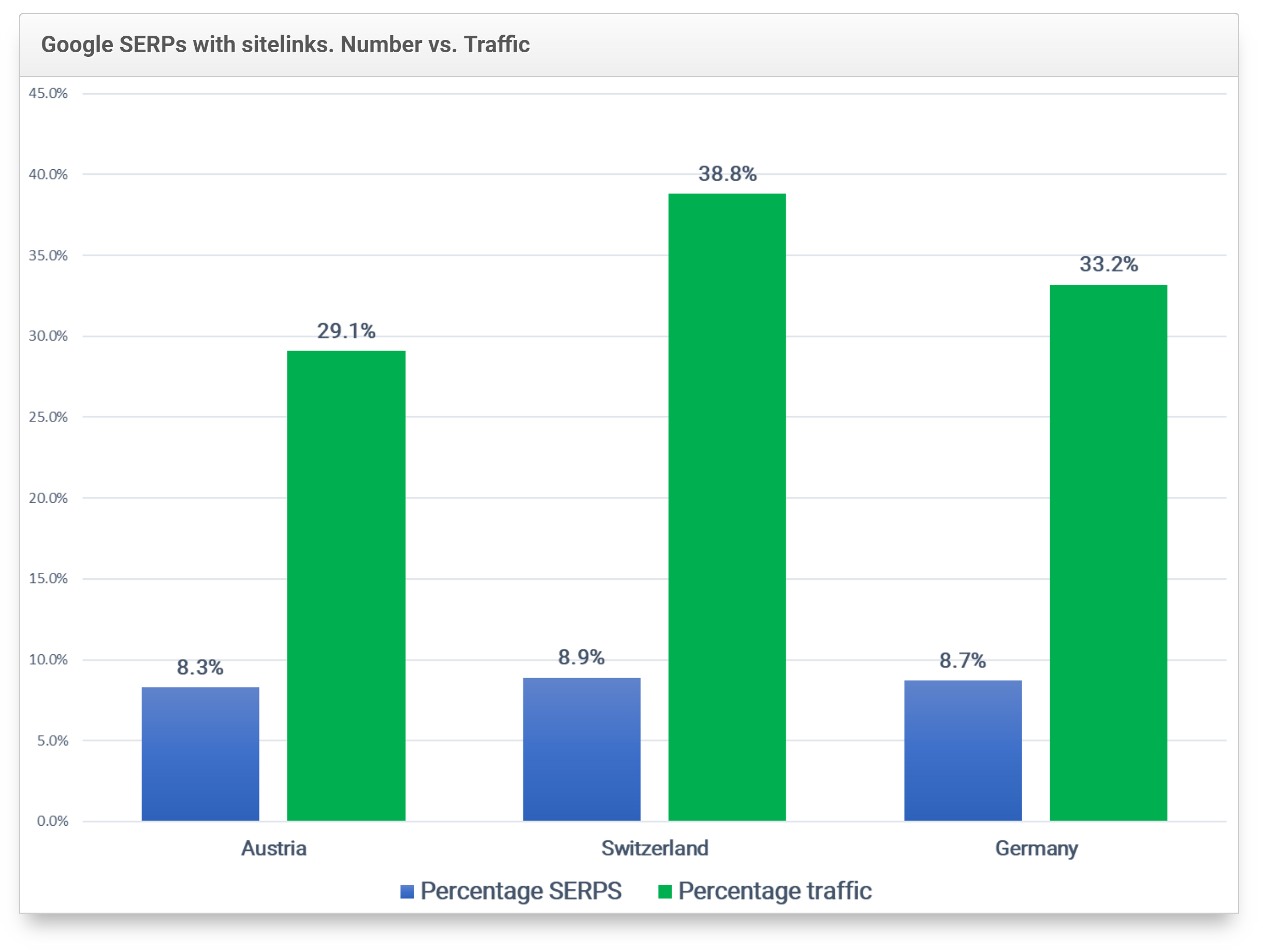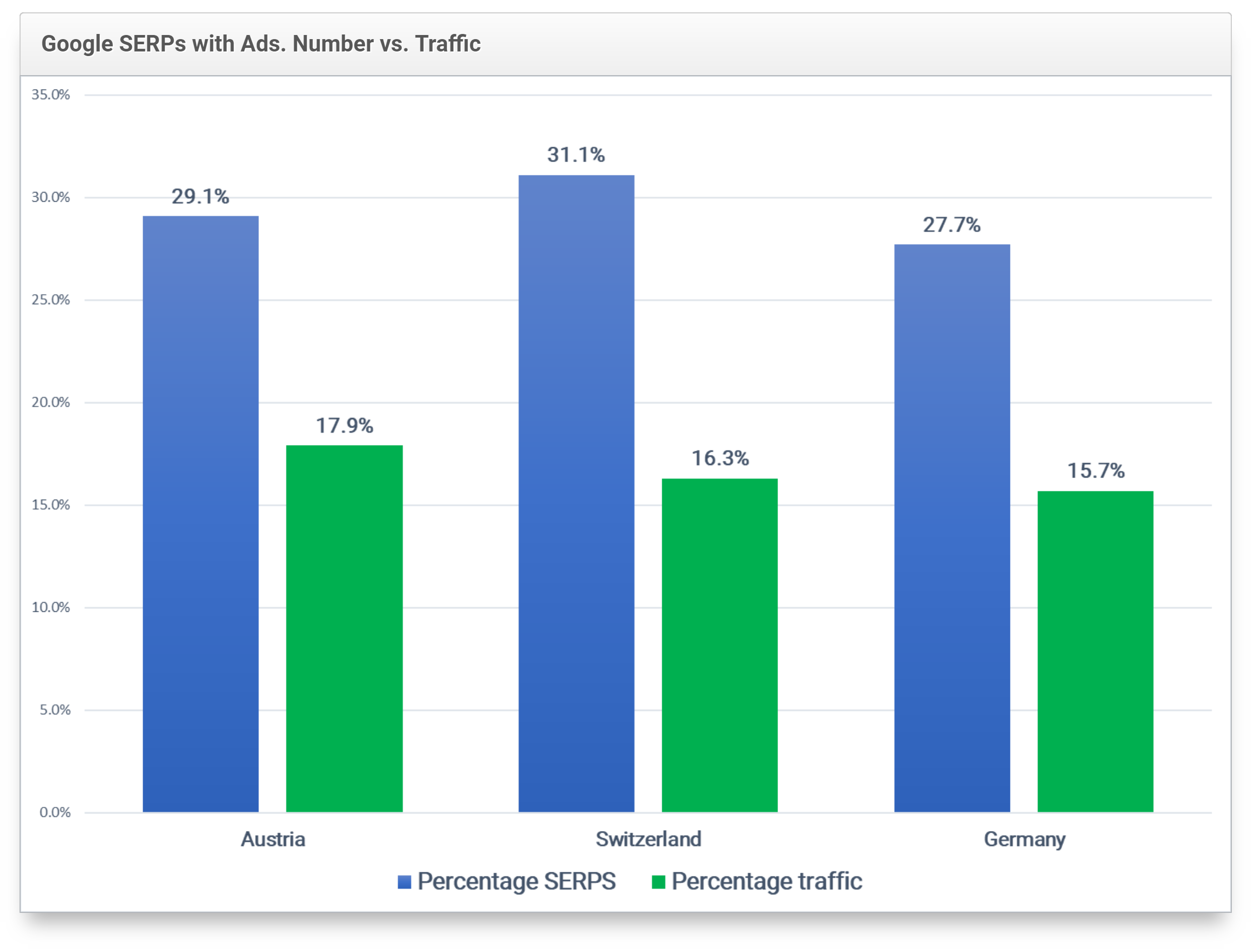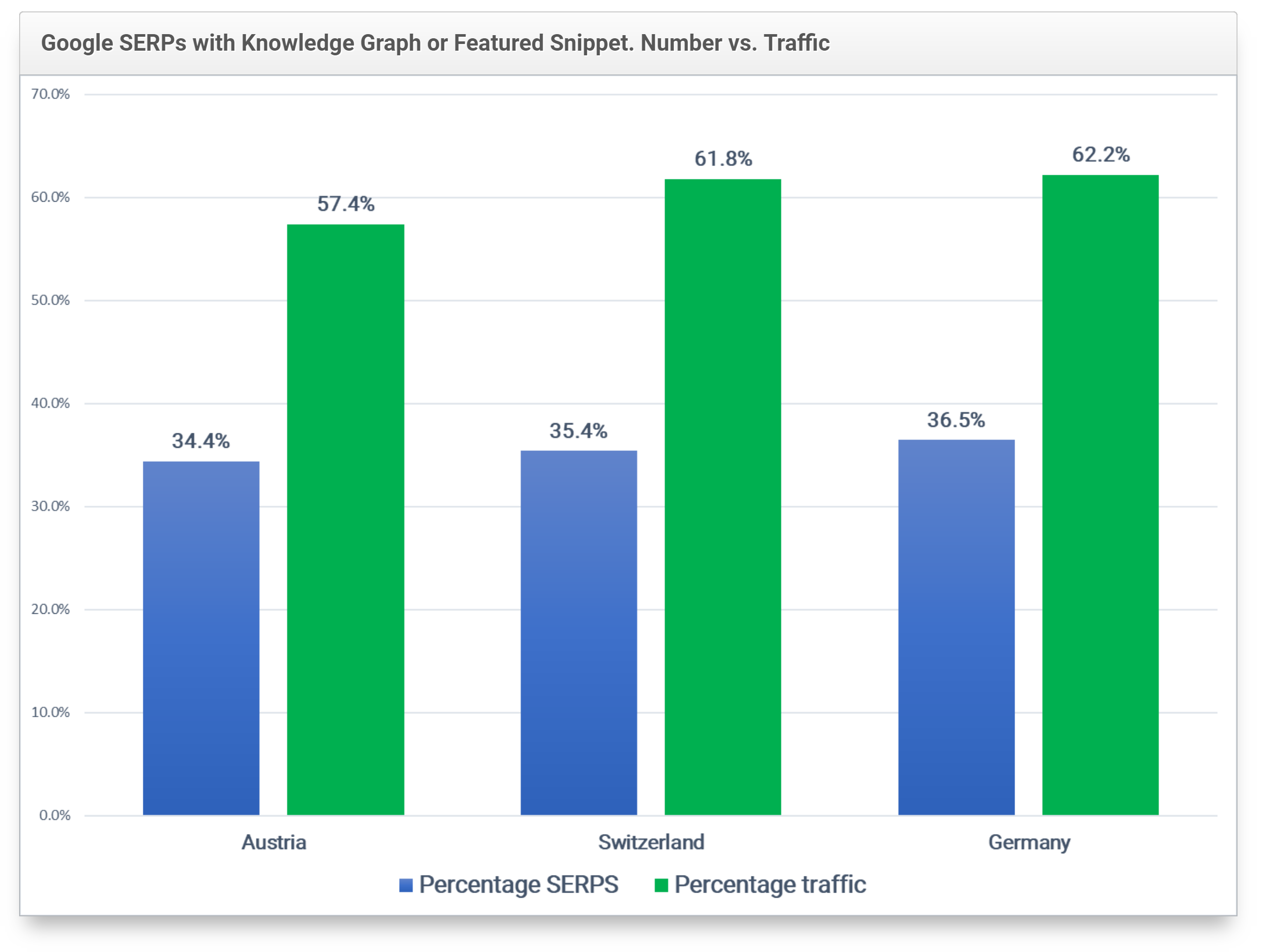Big Google updates, regular changes in the SERPs layout and lots of new SERPs features -The last 12 months brought us changes on a scale that we haven’t seen for a long time. With these changes in mind, how exactly do you build a long-term SEO strategy? In this post you’ll discover how.
You may have noticed by looking at the SEO winners and losers of the past year: Google is becoming faster, and more unpredictable. The shift from algorithm to machine learning (ML) has been very clear over the past year. The time for tricks and shortcuts is over now. Long-term success now belong to those who understand, and work-towards Google’s goals.
To take a look at Google’s future, you need to switch from the desktop to the smartphone. There, on the smartphone, is the future of the Google SERPs.

Wherever possible, Google now tries to provide direct answers to the queries entered by the searcher, directly in the SERPs. Where you still find organic results in the visible area on the desktop, you’ll find results looking like those on the images.
Yet for most website owners, there is no alternative to Google: Facebook is stumbling, Instagram has almost no options that can guide a visitors to a website and Amazon is a notoriously closed system. As a consequence, we will have to come to terms with Google over the next few years. Luckily, Google’s goals don’t stand in the way of most website operators.
Google’s Future is Public
With a corporation of the size and influence of Google, you’ll find public information coming from many places. Google also offers regular insights into its goals. For example, Ben Gomes, the current VP Search at Google, explained the goals for the next 20 years of Google search in a blog post. There are many other documents and publications give an idea of Google’s thinking too.
For SEOs, the Google Quality Rater Guidelines are the most important document: Google describes its view on ideal search results and lets an army of freelance employees regularly measure the current SERPs against this standard. What better view of Google’s goals could we get?
User Intent -What does the user want?
A central element here is the user’s needs. Under the title “Understanding User Intent” (item 12.7, page 68), Google describes in the Quality Rater Guidelines which user / search intents exist and which answers Google would like to give to them.
The concept of the user intent is not new. The user intention has been considered in information retrieval systems for many decades. We also see early adoption of this web search, for example, in this paper by Andrei Broder, who worked at Altavista.

The subdivision of searches into Navigational, Informational and Transactional can be found in almost all SEO textbooks and basic seminars. Google has now expanded on this classification in one point and used two additional points to underscore the current reality of web search.
Understanding the user intent of keywords makes it clear what information Google will use in the future. Based on this we can assess which organic SEO opportunities will still exist in the future. The user intentions in detail:
Visit in Person
Google has added “Visit in Person” as a user intent. This is about searchers who are, mostly, looking for a local business on their smartphone. SERPs with this user intent often look like this:

It’s easy to see that Google Maps dominates this mobile SERP. While on the desktop you can often see the beginning of the organic results, on the smartphone you can only see Google Maps.
In the following analysis we compare the percentage of SERPs that have a Google Maps integration to the total traffic for these keywords. The core question is: How often does Google Maps actually appear and how traffic-relevant are these integrations?

It’s clear to see that the keyword totals and total traffic for the keywords are running close with Google Maps integrations. A good 10% of the keywords in our index also account for around 10% of traffic.
Website (formerly Navigational)
Search queries with the website user intent are keywords in which the user wants to access a specific, previously-known target website. Typically, searches with this user intent look like this:

The searched website ranks organically in the first position and usually has sitelinks. The corresponding hit thus occupies a large part of the visible area on the smartphone. Users rarely click on organic links further down. The comparison of keyword count and traffic looks like this for keywords with sitelinks:

Here we see a distinctly different distribution than with the Maps integrations. While the keywords with sitelinks make up only a small share of all keywords, it is disproportionately more much search volume, which accounts for these keywords. Users search for brands known to them.
Do (formerly Transactional)
The user intention “Do” is about the searcher wanting to do something. Frequently it’s to buy something but sometimes it’s a download, install or other active process. SERPs with this intent often look like this:

Google displays only paid advertising in the visible area of the smartphone. In addition to traditional AdWords ads, Google has become inventive. Whether it’s Google Shopping (PLAs), app downloads, flight comparisons, credit information, and more, the number of different paid ad formats are increasing with each stock-market quarter. Interesting is the comparison of the number of keywords and the traffic for such keywords:

During the course of increasing its revenue, Google has “exposed” large parts of the SERPs, with around one third of the keywords examined, to some form of paid result. Interestingly, the traffic associated with these keywords does not match. It is less than 20% of traffic.
This imbalance is Google’s core issue for the next few years. Significantly more ads in these SERPs will not lead to the same amount of traffic (and thus clicks and therefore revenue.) Google will, therefore, want to get a bigger share of the cake from the existing, commercially-relevant keywords.
Also categorized by Google into this intention is the Device Action. The point here is that users of smartphones want to interact with the device. Examples of such queries are: “Call X“, “Send Y a text message” or “Set the alarm to 6 o’clock“. For SEOs, search queries from this category are generally not interesting. It’s about the user’s interaction with his mobile phone, not classic search queries on a web index.
Know (formerly Informational)
The fourth, and last user intention concerns the search for information. Google calls these Know, and Know Simple as a variation. To understand the difference between these two intentions, take a look at these two sets of screenshots:

In the upper row you can see typical “Know” searches. One line down you see screenshots of the corresponding “Know Simple” search. These examples alone make it clear where Google sees its future; Information about simple knowledge queries is delivered directly to the SERPs, while the more complex topics that need to be differentiated are referred to the web pages. The comparison of number of keywords to their traffic:

It’s clear to see that the search for information continues to be the stronghold of web search. Almost two-thirds of all search queries have a SERP feature that points to a clear ‘Know’ search. If you add more features, like the image box, this percentage grows even more.
Does Google need your website?
Let’s move on to the key question that you have to ask yourself for each keyword or keyword cluster: Does Google need your website to fulfil the search intent?
For organic rankings, the answer to this question will often be negative for the visit-in-person as well as the do-intention. Visit-in-person is dominated by Google Maps integration. Organic rankings can only be found in the much weaker section below the maps feature. It tends to look even worse for the tendency of the ‘Do’ intention. Google will want to step-up its monetisation efforts to generate growth.
For Know-intentions, the answer is ambiguous. When it comes to very simple answers that Google can answer as Know-Simple directly in the SERPs, this will increasingly happen. However, if you answer complex questions and topics with your content, that will still work organically for some years.
For Website-intent keywords, the answer is easy: Google can only deliver your page as the result to give the searcher the right answer. Again, you are on the safe side.
In conclusion…
- Become a brand so that Google can not do without you as a result.
- Answer topics at a depth that goes beyond what can be shown in the SERPs.
